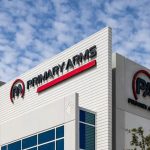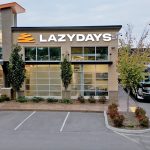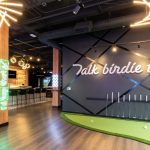The U.S. economy did better in the first half of 2023 than early indicators suggested and appear to be “rolling forward” even as the growth rate slows for the remainder of the year, National Retail Federation Chief Economist Jack Kleinhenz said.
“The first half of the year is over, and the economy is still moving in the right direction,” Kleinhenz said. “While its rhythm, tone and pattern have slowed, it has not stalled, and recently revised data shows underlying strength that seems to be rolling forward.”
“The resiliency of the U.S. consumer will be tested in the coming months as economic headwinds are likely to impair spending,” Kleinhenz said. Nonetheless, $500 billion in excess savings built up during the pandemic and continued employment growth mean consumers are on “the path of least resistance to economic growth and are doing their part to keep the economy moving ahead.”
Kleinhenz’s remarks came in the July Issue of the NRF’s Monthly Economic Review, which said revised data from the Federal Bureau of Economic Analysis shows that first-quarter gross domestic product adjusted for inflation grew 2 percent year-over-year rather than the 1.1 percent first reported. The personal savings rate was revised upward to 4.3 percent from 3.4 percent, and final private sales to domestic purchasers, which exclude inventories and imports to provide a good indicator of underlying growth, were revised to 3.2 percent growth from 2.9 percent.
Consumer spending, which makes up 70 percent of GDP, increased at an annual rate of 4.2 percent in the first quarter, four times the 1 percent growth in the fourth quarter of 2022 and the fastest growth since mid-2021 despite strong headwinds from interest rates and inflation.
Unadjusted household spending was up 0.1 percent month over month in May, compared with 0.6 percent in April, indicating that a slowdown could come when second-quarter results are released.
Spending has slowly shifted from goods, which declined 0.5 percent in May, to services, which grew 0.4 percent. Retail sales, as defined by the NRF, excluding auto dealers, gas stations and restaurants, to focus on core retail, were up 0.4 percent month over month in May but less than the 0.6 percent growth in April.
Last month, the Federal Reserve’s Open Market Committee left interest rates unchanged for the first time in 10 months, saying the pause would give time to assess the effect of the already adopted increases. But most committee members expected two more rate increases in the coming months, with others predicting anywhere from one to four hikes. Only two of the 11 members expected rates to stay the same.
Meanwhile, inflation remains elevated but is easing and taking pressure off of households.
The Personal Consumption Expenditures Price Index, the Fed’s preferred measure of inflation, showed prices were up 3.8 percent year-over-year in May, down from 4.3 percent in April, and the first time inflation was under 4 percent since early 2021.
PCE inflation peaked at nearly 7 percent in mid-2022. Despite the reduction, continued increases in consumer spending could prompt the Fed to increase interest rates further in an attempt to slow inflation to its target of 2 percent.
















